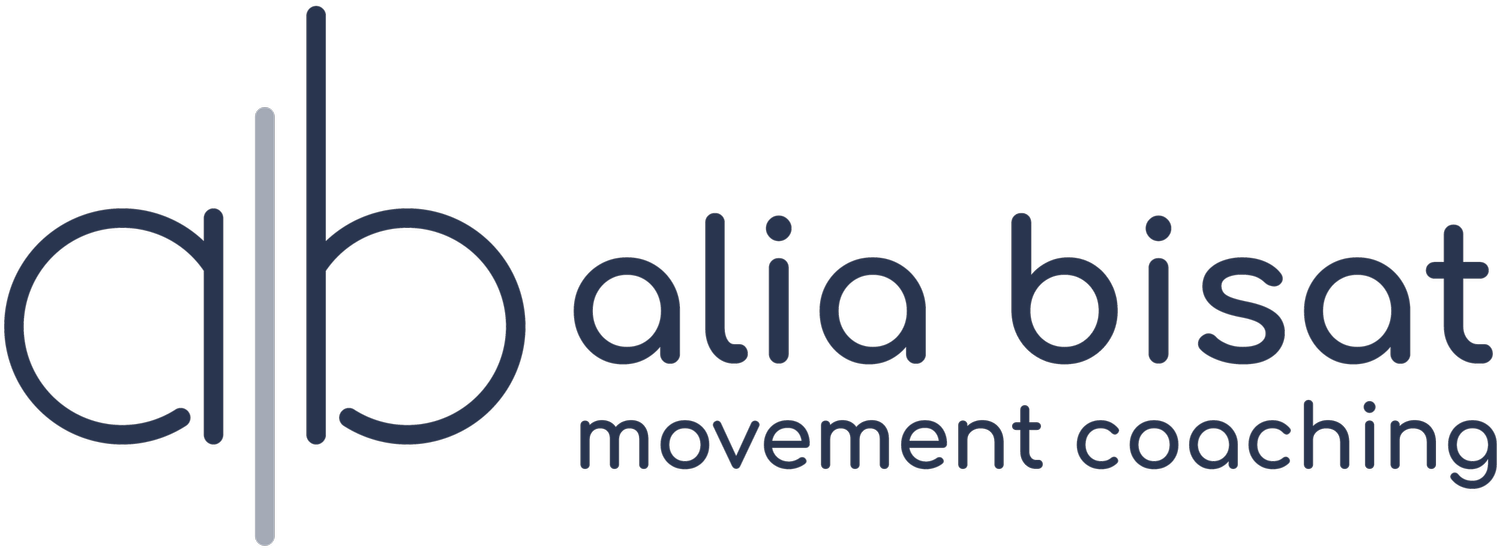Pain Demands Your Attention
I usually ask clients for feedback after an exercise, especially if it’s a new one. Let’s say we’re doing a bridge variation. I might ask, “Where did you feel a sense of work?” Or “Did you feel anything happening in the backs of your legs?” Oftentimes, they’re not sure of the answer. They have to go back and do it again paying particular attention to various parts of their body, and then can respond accordingly. After they repeat it and know what to pay attention to, the exercise might actually feel harder even though they’re performing the exact same movement as before. Their legs were working the same amount both times, but their attention wasn’t resting there, therefore they didn’t have the perception of them working.
Pain works the same way. It demands our attention to exist. The structure of the body hasn’t changed from one moment to the next, but the level of awareness has.
I was asking a client to do a sit-to-stand which is sitting down on a box and coming up to stand. The first few times he did it, he told me he felt an upper back pain, a complaint he came in with when we first started working together. I gave him a weight to hold in his hands and asked him to repeat the exercise a few times. He remarked that now he felt his abs instead, but he’s not sure if that meant the back pain went away.
I found this to be a particularly interesting comment. His comment suggested that he thought the pain in his upper back might still exist, even though he didn’t feel it the second time around. Pain is not an objective entity—it doesn’t exist outside our conscious perception. If you don’t feel it in this very moment, then it doesn’t exist.
I have a memory of being a child, maybe 7 or 8 years old. I’m throwing a wild tantrum that I’m too old for because I’m about to get my blood drawn. The nurse has to lure me with a piece of candy, literally dangling it in front of my eyes while another nurse pierces my skin with the needle. The way I remember it, I didn’t feel the needle. Did the needle still hurt even though I didn’t feel it? No. I wasn’t aware of it, as my attention was shifted toward the candy instead, so there was no pain. Had there been no candy, and had I been solely focused on the needle, most likely I would’ve experienced pain.
A different client said to me the other day that when he’s in the classroom, lecturing in front of 60 students for 3 hours, he doesn’t feel a single ache in his body. He doesn’t feel much of his body at all, since every ounce of his attention is focused on his lecture and his students. Do they aches still exist? Well, no. If he doesn’t feel an ache then there are no aches! This may sound trivial but the distinction has enormous consequences in the way we talk about our body and identify with our pain. Instead of always saying we are in pain, we might choose to say that we feel pain. It’s a small shift (one that’s at the core of meditation practice) but it removes us from attaching to the identity of pain and allows us to observe the flux of pain. This separation is the foundation of being curious about our painful state. Of course, when the pain is extreme, there’s no room for curiosity. But I’m referring to the nagging, chronic pain states that slowly chip away at our functionality. Why is curiosity important? If we start to ask questions, observe the nuances of what we’re feeling, and are open to experimentation, we have opened the gates to potentially changing our pain states. Curiosity is a powerful prerequisite to learning, and learning (adaptation) is the constant state of our physiology.
You can only feel what you pay attention to. If you’re feeling your stomach pain, you’re probably not feeling your clothes against your skin. Vice versa, if you’re concentrating on feeling your hands and whatever surface they’re in contact with, you’re probably not feeling your stomach pain, even for just an instant. You can field your sense of curiosity toward playing with deliberately shifting your attention. When you’re in pain, try to shift your awareness to somewhere else on your body. Even for just a moment, you’ll notice that your sense of pain disappears as you strongly focus on the other body part. Maybe you decide to get really really involved with cooking dinner, folding laundry, or playing with your kid — you might realize, when you finally disengage from those activities, you weren’t actually in pain while doing them.
This ability to shift our attention is a remarkable tool for understanding the transient state of our being (and is unique to us a human species). It’s also incredibly useful for hindsight reflection. Our memory is quite terrible—we make things up all the time to fill in the gaps of our stories, and we do this with pain as well. For example, if you’re someone who experiences chronic back pain, it’s highly unlikely that your back hurts every single second of every single day. It’s more likely that there are periods of pain and periods of no pain. It might reassure you to remember that you’re not always in pain every second. It might remind you that you’re not as “bad off” as you think you are. Yes, you might experience pain often, but hone in on the fact that when you’re not thinking about it, it isn’t there.
Keep moving.
